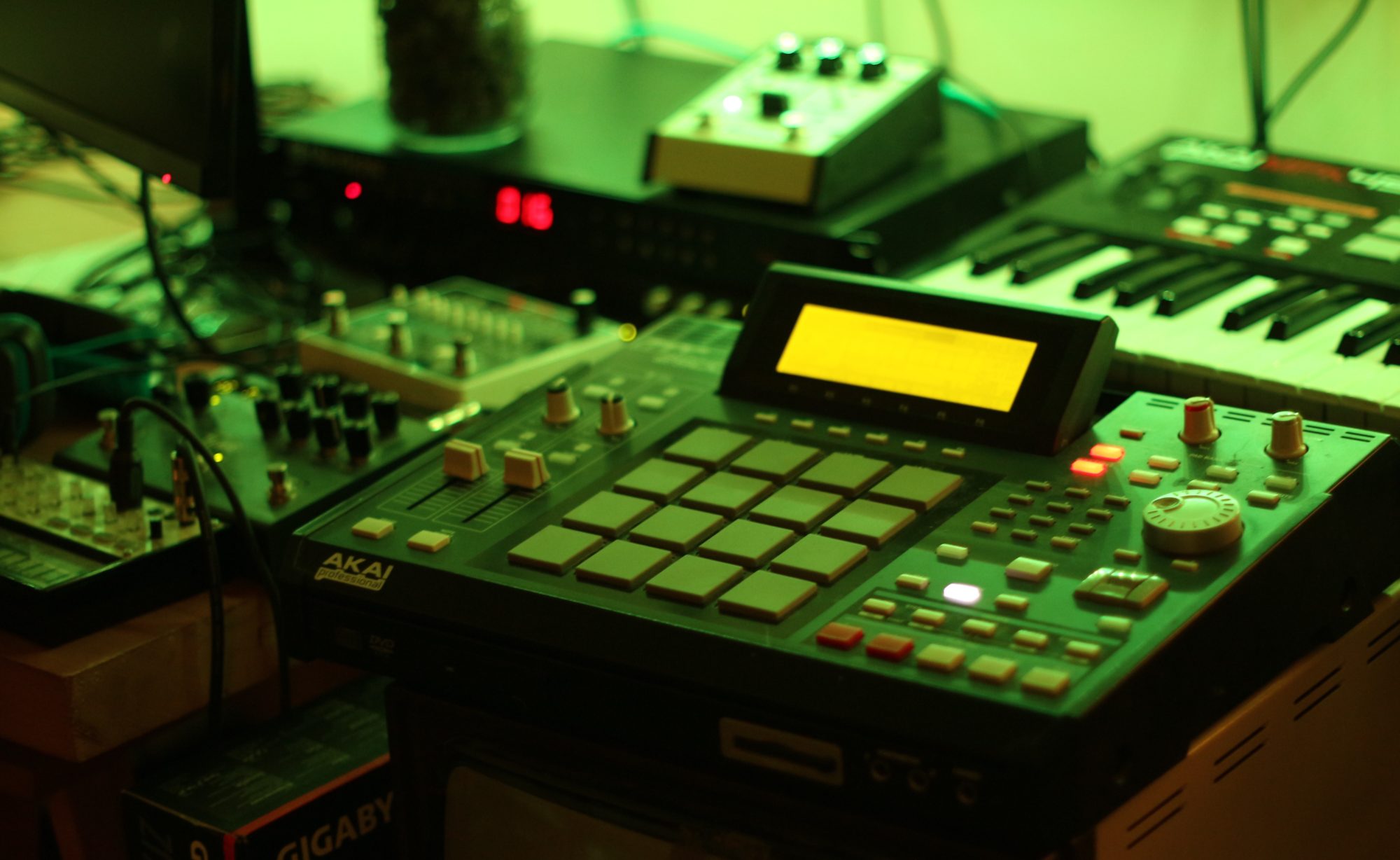Hello everyone.
I thought I’d share some experimentation I’ve been doing with the Arduino and a 12 bit dac (mcp4921).
I’d been looking for things I could do with it and one obvious thing that came to mind was creating a sync signal for the Volca’s.
I analysed the output of the sync signal from the SQ-1 as best I could with a multimeter and could see that the signal was peaking around 0.32 volts.
Now if I could get the dac to output a voltage somewhere in that range at a regular interval I’d be able to control the Volca’s tempo from the Arduino.
The mcp4921 connects to the Arduino via SPI. Here I’m using pins 10 (CS to dac pin 2), 11 (SDI/MOSI to dac pin 4) & 13 (CLK to dac pin 3).
The rest of the dac pins are configured as follows;
pin 1 to Arduino +5v
pin 5 to Arduino ground
pin 6 Voltage reference to Arduino +5v
pin 7 to Arduino ground
pin 8 dac output to positive on headphone jack


You can download the Arduino sketch [here]
IPFS hash: QmP92HoznfndYv6Wh9zJPkWP2uvHy9zV5Tmr7QZa1rtPUk
The sketch employs a delay between setting the signal high and low which is set by the value of the variable tempo_delay. The delay is in ms and converting from bpm to the correct ms delay is simply as case of using the following formula. tempo_delay = (60,000 / BPM) /2.
Here are some rough values to get you started.
80 bpm = 376
90 bpm = 334
120 bpm = 250
126 bpm = 238

Hi, is the sketch still available?
Hey sorry for the slow reply.
Not been checking the site much recently.
I think Dropbox changed something with their public folders.
I’ll take a look today and try and get an alternative uploaded. (If you’re still interested after all this time. :-/)
Yeah man! Still interested!
Regards,
Nkcmt
Sketch back up.
Better late then never?
Hey, sorry.
That’s now back up.
Check the link in the post.
Hey there! I am also interested in the sketch for this project!
If you could upload it to dropbox, or maybe to a repository, that would be super cool of you!
Sketch now back up
Hi,
Is there a way to share the sketch? That would be great! I want to sync my Volcano to an Arduino based synthesizer if possible.
I’D appreciate it if you could reup the sketch
Hey.
So sorry about that.
Sketch back up if you check the post.
John
Hi, good job. But there is an error. It’s impossible to measure a PWM with multimeter. The value in volt will be wrong. Check in the korg site the real voltages:
https://www.korg.com/us/products/dj/volca_keys/page_2.php
https://www.korg.com/us/products/dj/sq_1/specifications.php
The sync out of SQ-1 or Volca is 5 volt! The sync in is max 20 V.
Hello, thanks for taking the time to read and comment.
The document you linked to does not say that. It says it allows up to “max” of 20v input but the sync output is 5v.
It’s sensible that the input port is not instantly blown if you feed in a bit more then the 5v required.
hello kind,
I didn’t understand what the korg website wouldn’t say. Here it is described quite well what happens if you measure at PWM with multimeter: https://lygte-info.dk/info/DMMPWM%20UK.html
I did not say that it is wrong to input a voltage lower than the 5 volts at which these devices work for that output signal.
In any case I think it’s wasted to use a 12 bit DAC to send a PWM. A DAC is useful in arduino because it increases the “vertical” resolution of the signal, ie its voltage, but this is not necessary for this purpose because korg devices can very well accept the voltage with which arduino works (typically 5v). In your sketch, in fact, you use this potential of DACs to send a variable voltage but in a fixed way, by sending a fixed voltage (and in fact you send it a much lower voltage than what you presumed the volca sent).
I advise you to use your DAC to generate an audio signal in order to take full advantage of the usefulness of the DAC and use either a digital pin of the Arduino (keeping a good part of the sketch) or better still using the internal PWM of the Arduino to send sync (it’s a little more difficult but not impossible). In this regard, I suggest you take a look at this page, where the timer associated with the Arduino PWM is used to generate a variable sync over time: https://ejlabs.net/arduino-midi-master-clock/
Regards
Sorry, you’re absolutely right and I had thought I had cancelled my reply last night. (website was being very slow)
As you can tell, I am very much a beginner when it comes to electronics.
I had hoped I had deleted the reply yesterday.
I had planned to come back and give you a proper reply after engaging my brain today as I am currently unwell with the virus.
Rereading my post it makes no sense the voltage I am sending out.
Best regards,
John